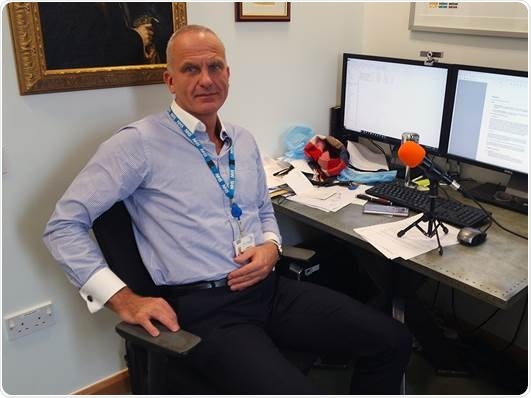A leading Professor of Ophthalmology at the University of Oxford has shared the details of his research which could pave the way for a new treatment for sight loss condition Stargardt disease.

In the latest episode of eye research charity Fight for Sight’s podcast Eye Research Matters, Professor Robert MacLaren discusses his pioneering research into using gene therapy to treat the genetic eye condition, which involves using a harmless virus to take the correct genetic information into the eye so that it starts to work properly.
The gene therapy approach has been successful in other inherited eye diseases and is halting sight loss or even restoring some sight for patients at clinical trial. However, in Stargardt disease the faulty gene is so large it needs a bigger viral ‘package’ to hold the correct information and carry it into the affected cells.
Following early research funded by Fight for Sight, Professor MacLaren and his team at the University of Oxford have developed a larger viral ‘package’ to prove that it could successfully act as a vehicle for carrying the correct genetic information.
Professor MacLaren said:
We worked out a way of splitting the ABCA4 gene in two halves which overlap and recombine. In this research we were able to show that if we split the gene into two segments in a certain way, we could deliver it in two viral vectors. Imagine it like building a bridge over a river and the bridge is too big to fit on one lorry so you have to use two lorries. The issue is working out where to cut the bridge to make sure when you put it back together it’s stable.”
It’s hoped the new therapy can soon be taken to clinical trial and could ultimately lead to a new treatment that could transform the lives of people living with the disease by halting its progression.
Head of Research at Fight for Sight, Dr. Rubina Ahmed said:
We know what a devastating impact Stargardt disease can have on people and their families and currently there is no cure, so this research has huge potential to transform lives. This work shows the possibilities of eye research to make significant breakthroughs and find new treatments, which is why Fight for Sight focuses on the early stage research that can lead to these sorts of opportunities. The only barrier is the funding to make breakthroughs happen, with only one percent of funding invested in eye research despite 20 percent of people being affected by sight loss or blindness.”
Stargardt disease causes progressive central sight loss and there is currently no cure. The condition is most often caused by a fault in a specific gene (ABCA4 gene).
On the podcast, Professor MacLaren also discusses his research into the inherited eye condition retinitis pigmentosa and the future of robot-assisted eye surgery.
To listen to the full show, search for Eye Research Matters on Apple Podcasts or follow the link.